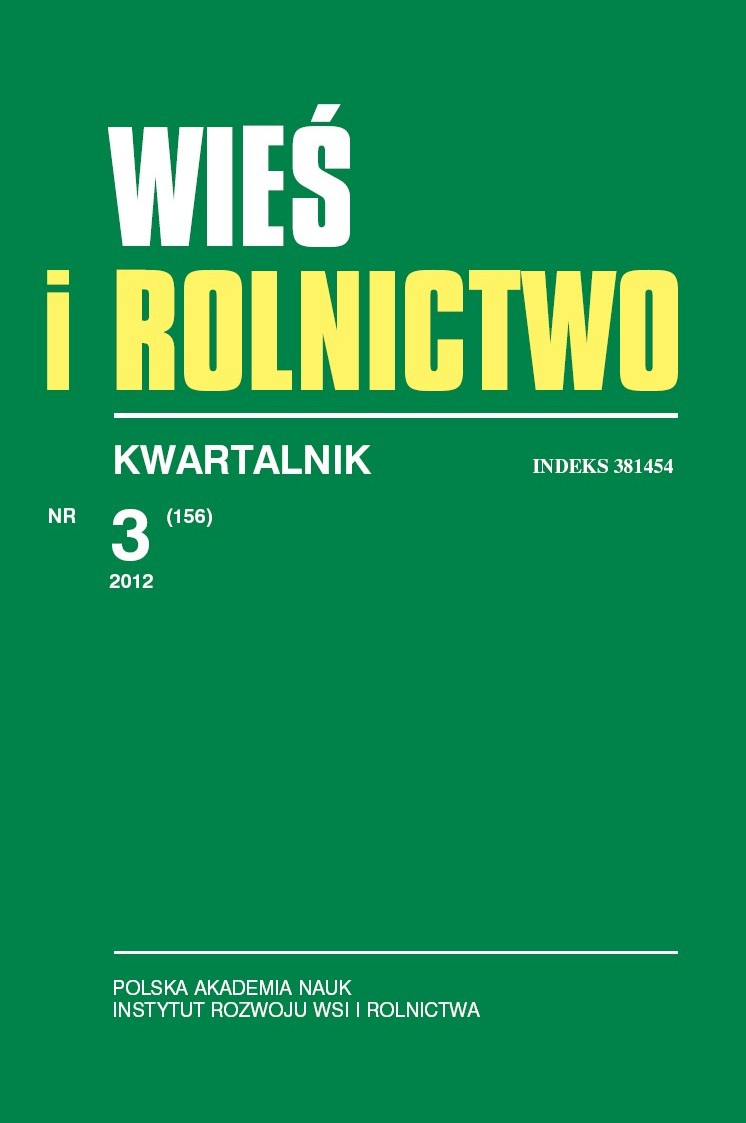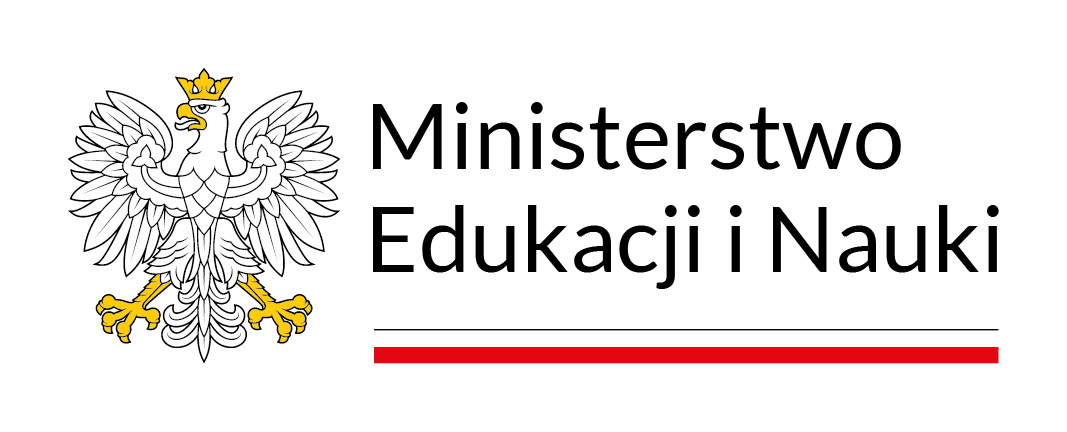What effect does national regulation have on LEADER programming in the EU-27? (Jak regulacje krajowe wpływają na kształtowanie programu LEADER w UE-27?)
DOI:
https://doi.org/10.53098/wir.2012.3.156/01Słowa kluczowe:
działanie publiczne, program LEADER, transfer modelu, normyAbstrakt
Program LEADER, wprowadzony w roku 1991 i włączony do europejskiej polityki rozwoju obszarów wiejskich, jest najistotniejszym elementem działań lokalnych na terenie Europy. Oparty na lokalnych partnerstwach skupiających przedsiębiorców, obieralnych przedstawicieli władz oraz osoby współpracujące na zasadach dobrowolności, LEADER będzie przykładem zasad współdziałania i subsydiarności, przyczyniając się do wzmacniania lokalnej demokracji. Badacze oraz praktycy rozwoju są zgodni co do jego innowacyjnego charakteru oraz potencjału „przenośności” wynikającego z faktu, iż program daje każdemu krajowi pewną swobodę w zakresie jego stosowania. Każdy z krajów Unii Europejskiej może realizować cele zgodnie z obranymi priorytetami i ma dużą swobodę w alokacji środków finansowych oraz doborze sposobów implementacji programu. W niniejszym artykule skupiamy się na sposobach przenoszenia programu LEADER (2007-2013) do wszystkich 27 państw członkowskich UE, zwracając szczególną uwagę na terytorialne skutki warunków jego transferu.Bibliografia
Arhenz H., 2004: Agricultural Policy and Rural Development: Theoretical and Empirical Aspects. In: The Role of Agriculture in Central and Eastern European Rural Development: Engine of Change or Social Buffer? Ed. M. Petrick, P. Weingarten. ”Studies on the Agricultural and Food Sector in Central & Eastern Europe” 25, IAMO: 340–355.
Bulmer S., Dolowitz D., Humphereys P., Padgett S., 2007: Policy Transfer in European Union Governance: Regulating the Utilities. Routledge, Abingdon. DOI: https://doi.org/10.4324/9780203964743
Callahan R., 2007: Governance: The collision of politics and cooperation. ”Public Administration Review” 67 (2): 290–301. DOI: https://doi.org/10.1111/j.1540-6210.2007.00714.x
Chevalier P., 2012: Le transfert du modele européen LEADER: entre diffusion des normes et durcissement réglementaire. ”Revue d’Etudes Comparatives Est-Ouest” 3. Action publique et développement territorial en Europe centrale. DOI: https://doi.org/10.3917/receo.433.0017
Chevalier P., Maurel M.-C., 2010: LEADER w krajach Europy Środkowej. Mechanizmy transferu modelu rozwoju lokalnego [Policy Transfer of the Local Development Model. The Leader Program Implementation in Central European countries]. „Wieś i Rolnictwo” 4: 26–41. DOI: https://doi.org/10.53098/wir.2010.4.149/02
Chevalier P., Maurel M.-C., 2012: L’expérimentation de l’approche LEADER en Hongrie et en République tcheque: deux logiques politiques différentes. ”Revue d’Etudes Comparatives Est-Ouest” 3. Action publique et développement territorial en Europe centrale. DOI: https://doi.org/10.3917/receo.433.0091
Deberre J.-C. 2007: Décentralisation et développement local. ”Afrique contemporaine” 221: 45–54. DOI: https://doi.org/10.3917/afco.221.0045
Denters B., Rose L.E., 2005: Comparing Local Governance. Trends and Developments. Palgrave Macmillan, Houndmills, Basingstoke, Hampshire. DOI: https://doi.org/10.1007/978-0-230-21242-8
Dore G., 2011: Le programme européen LEADER a 20 ans: Bilan et perspectives a partir du cas français. Communication aux 5emes journées de Recherches en Sciences Sociales, SFER-INRA-CIRAD, Agrosup Dijon.
Europeenee Commission, 2011: Cinquieme rapport sur la cohésion économique, sociale et territoriale. OPUE.
Gorton M., Hubbard C., Hubbard L., 2009: The folly of European Union policy transfer: why the Common Agricultural Policy (CAP) does not fit Central and Eastern Europe. ”Regional Studies” 43: 1305–1317. DOI: https://doi.org/10.1080/00343400802508802
Halamska M., 2005: Rozwój wiejski w Portugalii w latach 1986–2000. Wzór czy przestroga dla Polski? [Le développement rural au Portugal dans les années 1986–2000. Un modele ou un avertissement pour la Pologne?]. IRWIR PAN, Varsovie.
Halamska M., Maurel M.-C., (ed.), 2010: Les acteurs locaux a l’épreuve du modele européen LEADER. France-Hongrie-Pologne. CEFRES/IRWIR PAN, Prague.
Jouen M., 2011: La politique de cohésion. La Documentation Française.
Kukorelli Szorenyine I., 2005: The Appearance and Role of Micro-Regional Co-operations in the Hungarian Spatial Development. ”Geografický Easopis” 57, 3: 229–246.
Lacquement G., 2008: Du développement local dans les nouveaux Länder allemands: acteurs et territoires des programmes d’initiative communautaire LEADER+. ”Revue d’Etudes Comparatives Est-Ouest” 39, 4: 81–112. DOI: https://doi.org/10.3406/receo.2008.1926
Lostak M., Hudeckova H., 2010: Preliminary impacts of the LEADER+ approach in the Czech Republic [Predbezné dopady prístupu LEADER+ v Ceské Republice]. ”Agricultural Economics” 1/56: 249–265. DOI: https://doi.org/10.17221/27/2010-AGRICECON
M.A.P.A., 2009: Plan Estratégico Nacional de Desarrollo Rural, 2007–2013. Madrid.
Maurel M.-C., 2008: L’action publique „par le bas”: l’approche LEADER en Europe centrale. ”Revue d'Etudes Comparatives Est/Ouest” 39: 59. DOI: https://doi.org/10.4074/S0338059908004038
Maurel M.-C., Halamska M., 2006: Démocratie et gouvernement local en Pologne. CNRS editions, Paris.
Maurel M.-C., Pola P., 2010: L’émergence du développement local: le cas de Bóly en Transdanubie méridionale. In: M. Halamska, M.-C. Maurel (dir.) Les acteurs locaux a l'épreuve du modele européen LEADER: France-Hongrie-Pologne. CEFRES/IRWIR PAN, Prague.
Palne-Kovacs I., 2011: Local governance in Hungary-the balance of the Last 20 Years. Discussion papers n°83. Centre for Regional Studies of Hungarian Academy of Sciences, Pécs.
Plesiat M., Martu P., Actors and partnerships in the LAGs: a new civic space? A Czech case study. Paper to the Regional studies association conference, Pécs, 24–26th, May.
Pola P., Kovacs I., 2010: Some experiences of the Hungarian LEADER program. Regional Studies Association, Annual International Conference, Pécs (Hongrie), 24–26 May.
Ramniceanu I., Ackrill R., 2007: EU rural development policy in the new member states: promoting multifunctionnality? ”Journal of Rural Studies” 23: 416–429. DOI: https://doi.org/10.1016/j.jrurstud.2006.10.003
Ray C., 2000: The EU LEADER Programme: Rural Development Laboratory. ”Sociologia Ruralis” 40, 2: 163–172. DOI: https://doi.org/10.1111/1467-9523.00138
Saurugger S., Surel Y., 2006: L’européanisation comme processus de transfert de politique publique. ”Revue internationale de politique comparée” 13, 2: 179–211. DOI: https://doi.org/10.3917/ripc.132.0179
Smith A., 1995: L’Europe politique au miroir du local. Les fonds structurels et les zones rurales en France, en Espagne et au Royaume-Uni. L’Harmattan.
Spieser C., 2008: Les fonds structurels européens: quels outils pour faire face aux restructurations? ”Revue Internationale de Droit Economique” 22: 2. DOI: https://doi.org/10.3917/ride.222.0213
Pobrania
Liczba pobrań artykułu
Strony
Jak cytować
Numer
Dział
Licencja
Prawa autorskie (c) 2012 Wieś i Rolnictwo

Utwór dostępny jest na licencji Creative Commons Uznanie autorstwa 4.0 Międzynarodowe.










